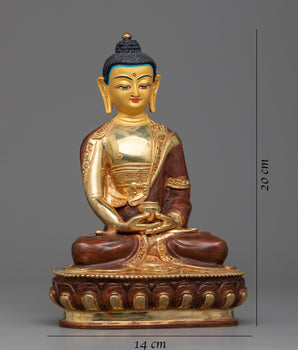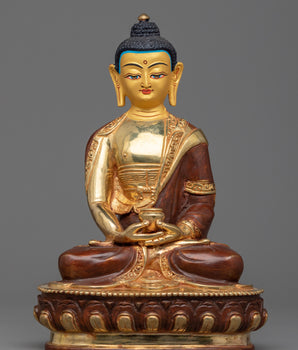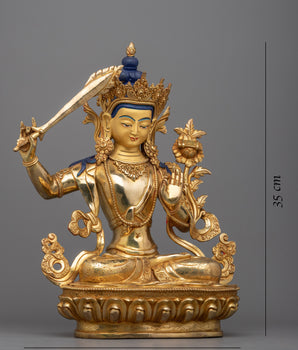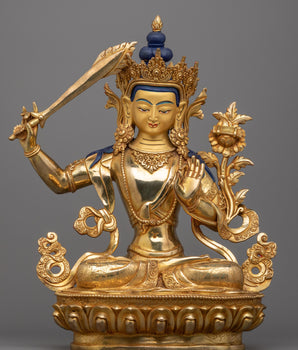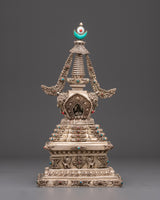
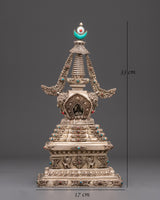
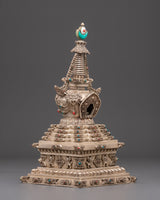
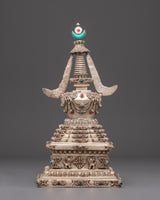
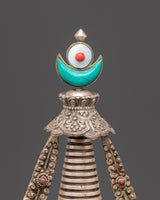
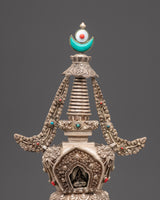
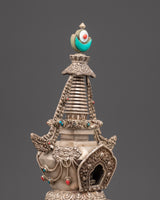
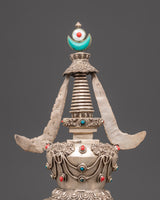
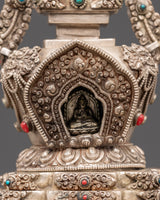
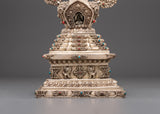
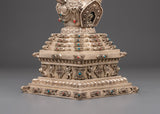
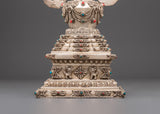
Handmade Stupa for Buddhist Ritual | Symbol of Enlightenment

100% AUTHENTIC

HANDMADE

FREE SHIPPING
Sacred Stupa for Buddhist Ritual | Copper Body and Turquoise Inlays
--------------------------------------------------
Size: 33cm (Height) x 17cm (Width)
Weight: 1.66kg
Materials: Copper Body, Silver Plated, Artificial Stones: Turquoise
--------------------------------------------------
About Our Ritual Item :
This Stupa for Buddhist Rituals is a precious and precisely designed emblem of spiritual devotion, made of copper with a silver plating finish. This stupa, measuring 33cm tall and 17cm wide and weighing 1.66kg, is intended for use in Buddhist rituals and ceremonies to signify the journey to enlightenment. The turquoise stones incorporated in the pattern represent knowledge and protection, heightening the stupa's spiritual significance while adding a pop of color to your altar or meditation room.
The stupa's style is inspired by traditional Tibetan architecture, with exquisite carvings and patterns depicting significant Buddhist symbols such as the Buddha's teachings and the wheel of Dharma. The stupa's pyramidal construction represents the five elements and five wisdoms, while the ornate inlays depict religious offerings. The silver plating gives an attractive finish, transforming this stupa into not only a spiritual object but also a lovely ornamental piece for any Buddhist practice room.
In Buddhist tradition, the stupa represents Buddha's enlightened mind and is utilized in rituals to generate merit and deepen meditation. This stupa is intended to bring harmony, wealth, and spiritual energy into your house or temple. Whether used for meditation, prayer offerings, or as a thoughtful gift for a loved one, this handcrafted stupa is a crucial tool for deepening one's connection to spiritual practices and sacred teachings.
Introduction To Stupa :
Before Buddhism, great teachers were buried in mounds. Some were cremated, but sometimes they were buried in a seated, meditative position. The mound of earth covered them up. Thus, the domed shape of the stupa came to represent a person seated in meditation, much as the Buddha was when he achieved Enlightenment and knowledge of the Four Noble Truths. The base of the stupa represents his crossed legs as he sat in a meditative pose. The middle portion is the Buddha’s body, and the top of the mound, where a pole rises from the apex surrounded by a small fence, represents his head. Before images of the human Buddha were created, reliefs often depicted practitioners demonstrating devotion to a stupa.
How to Set Up Your Own Buddhist Shrine?
• Find a clean, quiet, and uncluttered spot
• Set up an altar table, and cover it with an altar cloth that calls to you
• Place your sacred item at the center
• If you want a more elaborate altar, you can put a Stupa as well.

















